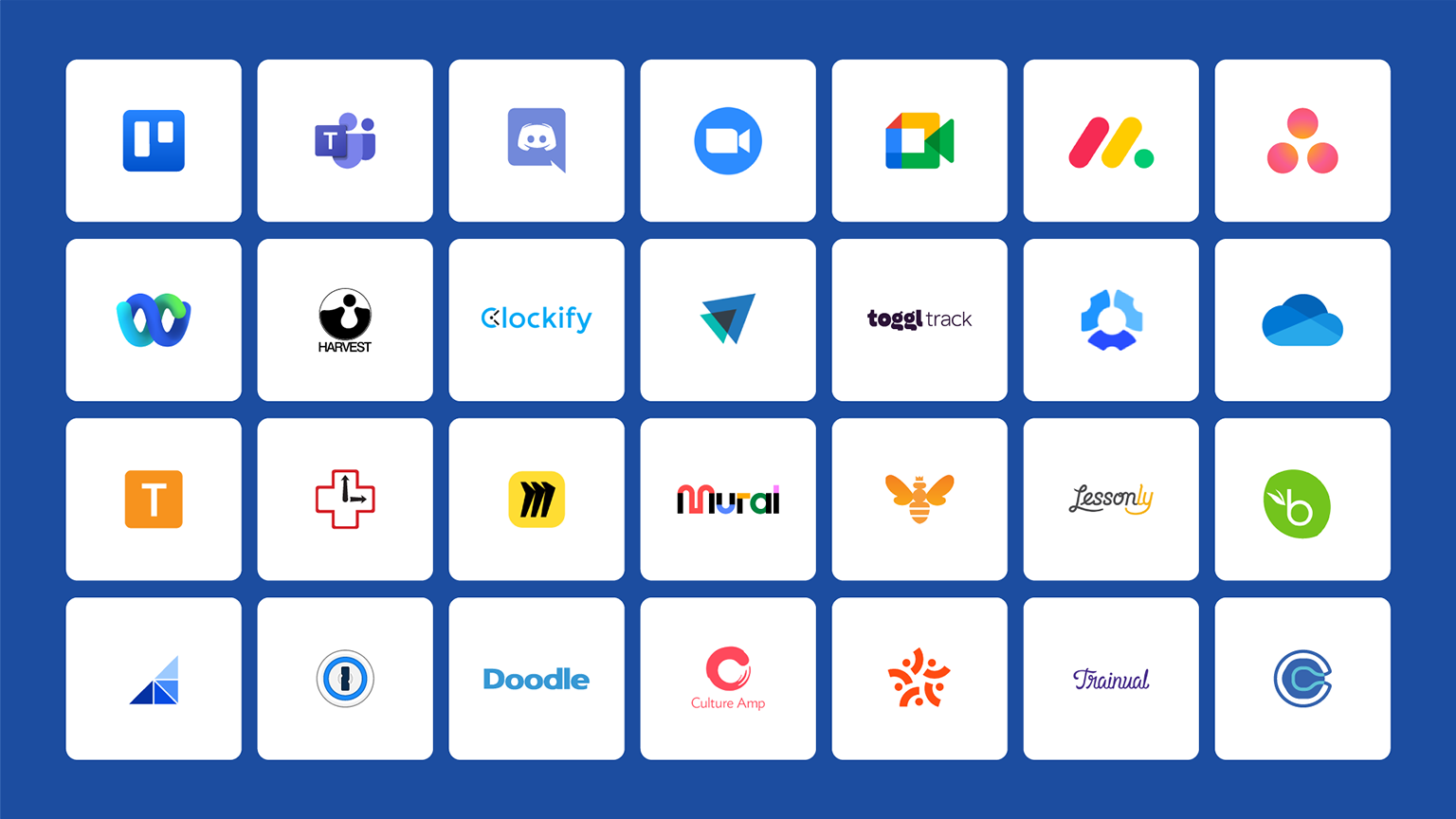The landscape of work is entirely different today. By 2025, managing a remote workforce has become more of a strategic way of business rather than a tactical means. Organizations are adopting different devices and ways of organizing work-life balance as they enhance their remote workforce technology to ensure productivity, collaboration, and security in a decentralized environment.
This article focuses on the remote work essentials for businesses and how to manage your IT assets through different strategies. This would help organizations that put emphasis on technology advancement while modernizing management practices.
The Rising Technology of the Remote Workforce
Indeed, remote workforce technology has innovated the entire business process, from communication to project management to collaboration.
Today, tools like Slack, Microsoft Teams, and Zoom are more than just add-ons; they have grown with features that facilitate AI, enable real-time collaboration, and offer security benefits needed for modern remote work teams.
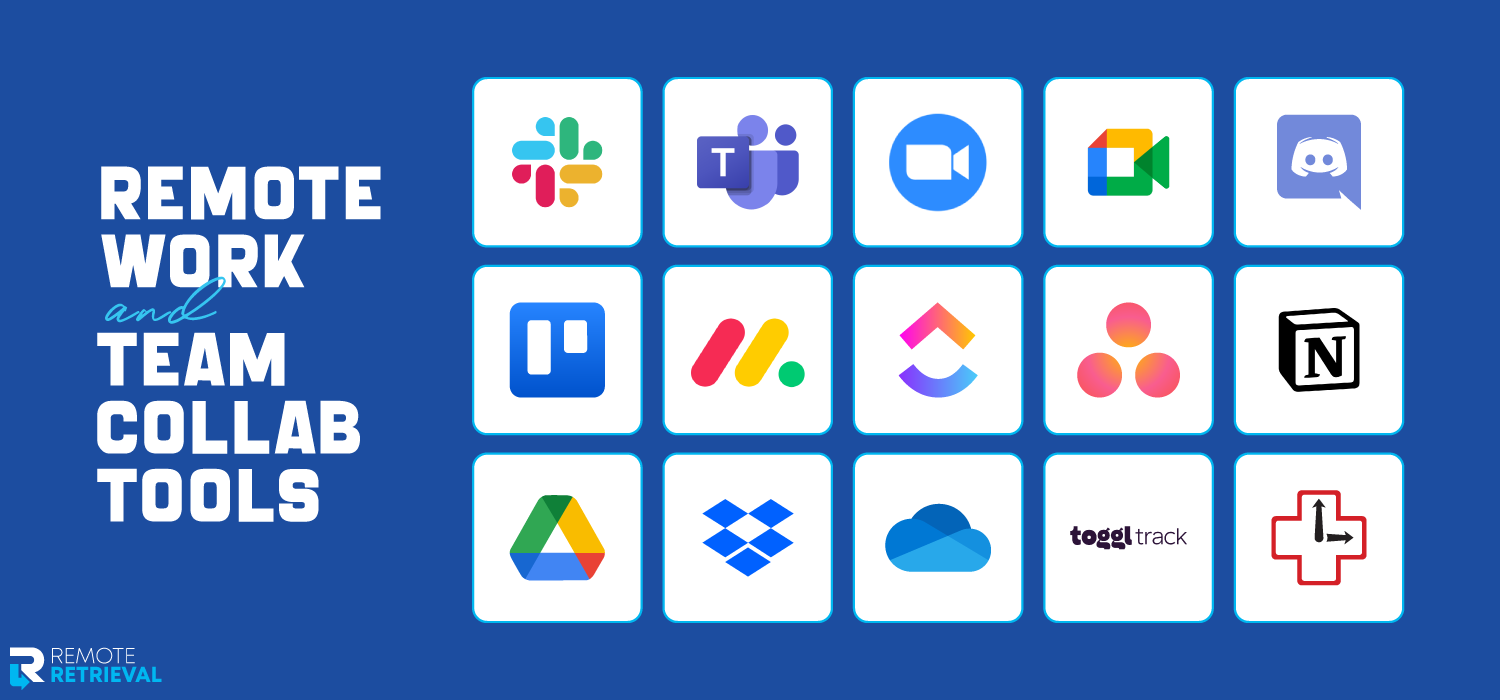
The image displays the tools for remote work and team collaboration.
For example, the inclusion of virtual reality and augmented reality in remote work settings is changing the way teams interact with each other. They allow virtual meetings to mirror the phenomenon of meeting principals and present engagement among team members, which was once considered impossible for remote sites.
Picking the Right Remote Workforce Management Software
Precise software selection that blends well with the overall goals and team requirements forms the base of an effective remote workforce management process. Today’s remote workforce management software features time tracking, performance analytics, and automated scheduling to ensure smooth operation.
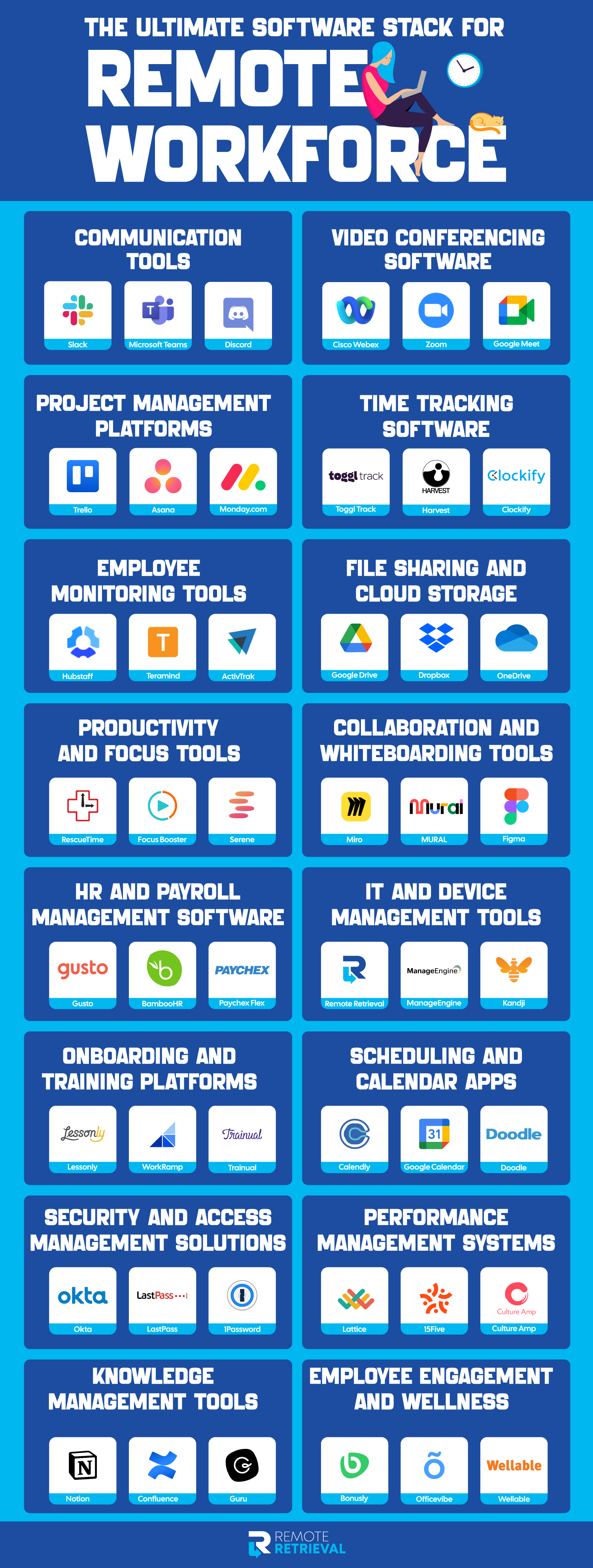
The image shows a list of different tools for communication, video conferencing, project management, time tracking, employee monitoring, file sharing, collaboration, and more.
Task prioritization, resource allocation, and progress tracking are among the features that come integrated with the AI capabilities of platforms like Asana, Trello, and Monday.com. The managers thus receive more tips regarding their input and actionable analysis for a goal-oriented approach.
Implementing Effective Remote Work Strategies
Some good remote work strategies form a strong basis on which a successful distributed team vcan stand. In 2025, remote work would be well on its way to becoming a long-term operational model, rather than a short-term fix, making it imperative for companies to steer further away from improvised methods and toward structured, scalable practices that equally emphasize productivity and employee well-being.
Making Remote Team Management Practices Stronger
Appointing work and waiting for performance doesn’t mean effective management of the remote workforce. Such a way of managing the workforce requires a thought change in leadership styles, communication methods, and trust-building. Leaders must now be well-equipped with the main tools for managing a remote workforce, but they also need to bring empathy and adaptability because they have dispersed teams.
Daily stand-ups using remote work management tools and software, alongside regular feedback loops, are crucial for establishing a transparent and accountable culture. Furthermore, incorporating wellness programs and flexible working hours will bring employee happiness, which is likely to lead to positivity if an organization adopts this approach in its remote work strategy.
Improving Security of Remote Workforce Solutions
One significant aspect of remote team management is securing your digital infrastructure. The threats are increasing due to the increase in remote operations, including data breaches, phishing attacks, and endpoint vulnerabilities. Enterprises in 2025 are spending significantly more on robust infrastructure that meets the demanding remote workforce model, based on VPNs, Multi-factor authentication, and AI threat detection, to safeguard operations.
More than this, it also offers proof-informing capabilities in terms of managing workflows with cloud-native solutions, including end-to-end encryption and secure file sharing. All of these must be part of any chosen remote workforce management software, if not installed by default.
Enhancing Efficiency in Work Processes through AI and Automation
AI and automation are changing the workplace technology for a remote workforce. From intelligent assistants that now perform all administrative tasks to machine learning algorithms that anticipate impending workload issues, technology is changing how teams function when working remotely.
Automation in remote work management tools is increasing productivity by reducing human errors, speeding up tasks, and freeing up time for strategic thinking. For better remote workforce management, AI identifies patterns in team productivity and recommends optimized schedules, break periods, or workload redistribution.
The future of remote workforce technology is AI and automation. From intelligent virtual assistants performing administrative tasks to machine learning algorithms predicting workload bottlenecks, everything turns traditional teams into remote teams.
Culture and Engagement Building in a Remote Setup
One of the underrated aspects of remote workforce management is culture. Because companies no longer have watercooler gossip or physical gatherings to rely on, they must devise creative ways to nurture engagement. Supportive activities, Slack social spaces, and routine video call meetings are employed to bring together emotionally distant teams.

The image shows the statistics about companies having high employee engagement, resulting in higher profits.
In 2025, most remote work strategies focus on the human connection; digital recognition platforms and well-being challenges foster a sense of shared ritual or tradition that strengthens a sense of belonging externally.
Assessing Success with Remote Workforce Management
Performance tracking in a remote environment demands new metrics and real-time insight. Traditional KPIs rarely meet the test of governing a remote team in which visibility is severely limited. Organizations are therefore using remote work technology that combines productivity tracking with behavioral analytics and sentiment analysis to determine team spirit and output.
The intelligent dashboards offered by remote workforce management software help executives track projects’ timelines and assess resource utilization to make data-driven decisions. That kind of analytical approach keeps organizations agile, enabling them to optimize internal processes and respond rapidly to roadblocks in their remote ecosystem.
Future Trends in Remote Work Technology
As 2025 advances, technology for the remote workforce is no longer limited to traditional collaboration tools and is moving into intelligent ecosystems for its next trend. These innovations help organizations shape immersive, secure, and efficient work environments for distributed teams. This enables enhancing interaction, reducing latency, and building trust in decentralized setups.
• Digital Twins of the Workplace
For example, the digital twin of a workplace includes the entire physical office space, with twins enabling interaction between remote teams and a virtual shared space. It can also take place in a digital home, such as the home-couch scene of informal conversations at coffee-infused brainstorming sessions or professionally scheduled meetings. This digitally identical physical workspace can enhance team connectivity and improve communication flavor while causing a more compelling remote experience.

Image Source: iStock/Urbanscape – A team is having an online meeting to communicate with each other.
This innovation, for example, adds a new level of realism and human presence in remote team management, as it builds the sense for the remote worker that they are more part of the organization than separate, as one taking the afternoon off to "work from home."
• Edge Computing for Remote Teams
Now, much closer to where data has been created, edge computing brings processing power. This is what it means for remote teams, who can work from anywhere across the world: they will access tools, files, and applications with increased speed and improved reliability.

Image Source: iStock/seb_ra – A woman is having a meeting through video conferencing with a pen in her hand.
With the growth in remote work technology, edge computing ensures that collaboration happens effortlessly for teams. It enables them to use high-performance applications or extremely sensitive data, even in areas with limited bandwidth. This means that companies can operate seamlessly while team members are miles apart, because physical distance won’t limit their productivity.
• Blockchain-Based Smart Contracts
The introduction of smart contracts under blockchain gives a whole new spin on the security and automation of remote workforce management. These are what people now refer to as self-executing agreements with terms written directly into code, enabling safe and transparent project management, task delegation, and payment processing.

Image Source: iStock/piranka – An overhead video of a team of 9 people working on 5 workstations.
In a remote environment where teams work in different jurisdictions and use asynchronous communication, they can also be well-defined and enforceable within a blockchain-based system. This reduces ambiguities, streamlines workflows, and makes work easier without requiring intermediaries. It lays a solid foundation for accountability and trust for firms that hire freelance professionals or those staffed with global talent.
Sustainability and the Digital Workplace
The definition of a sustainable program, especially for the most defining characteristic in this period, is through a digitalized workforce model. Organizations evaluate the environmental impact of their digital operations, from cloud energy use to hardware lifecycle management. Green IT practices integrated into the digital workplace strategy ensure that the work done by employees working from home is efficient and responsible.
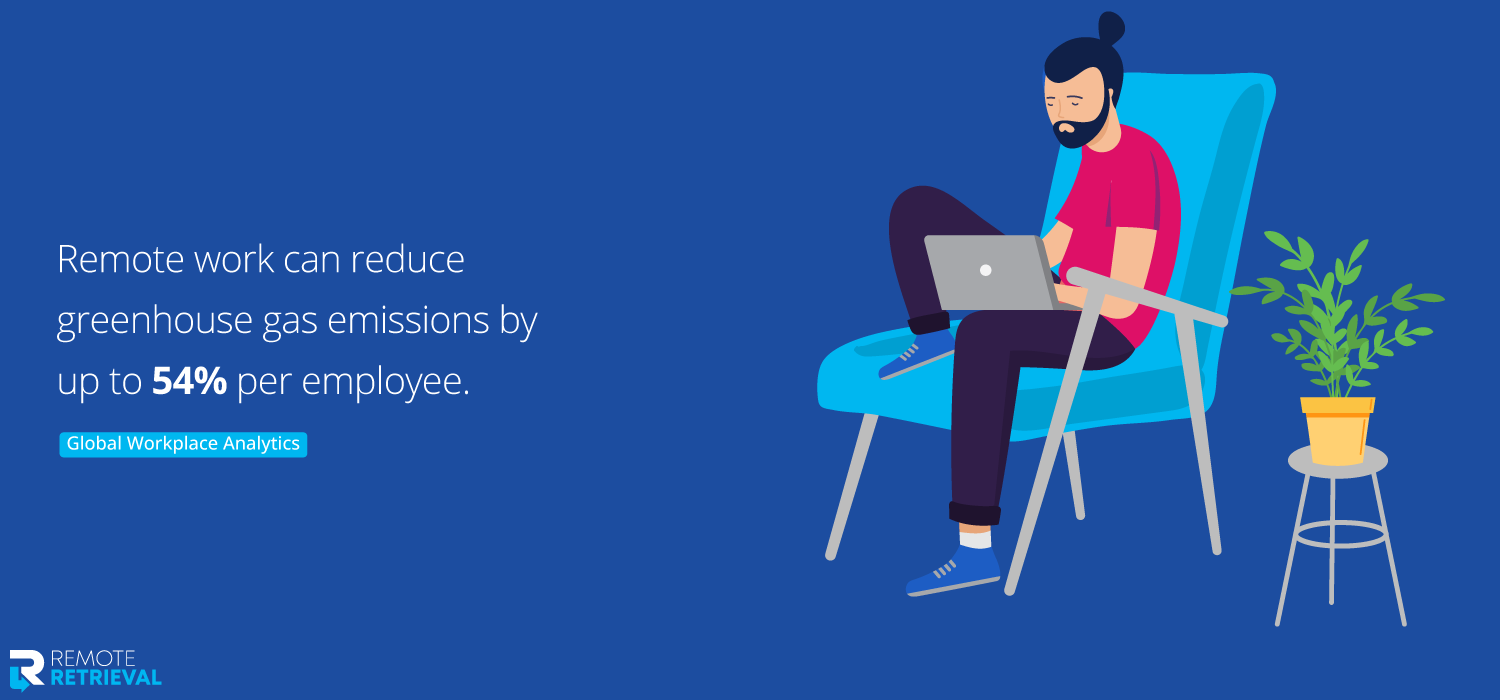
The eco-friendly benefits of remote work are highlighted as it can reduce 54% of the carbon emissions per employee, as reported by Google Workplace Analytics.
Remote workforce management tools must have functions for sustainability practices. It should show or indicate the measurement of their digital carbon footprint. You can use energy-efficient devices and promote a paperless workflow, all geared towards sustaining what the remote team is working for.
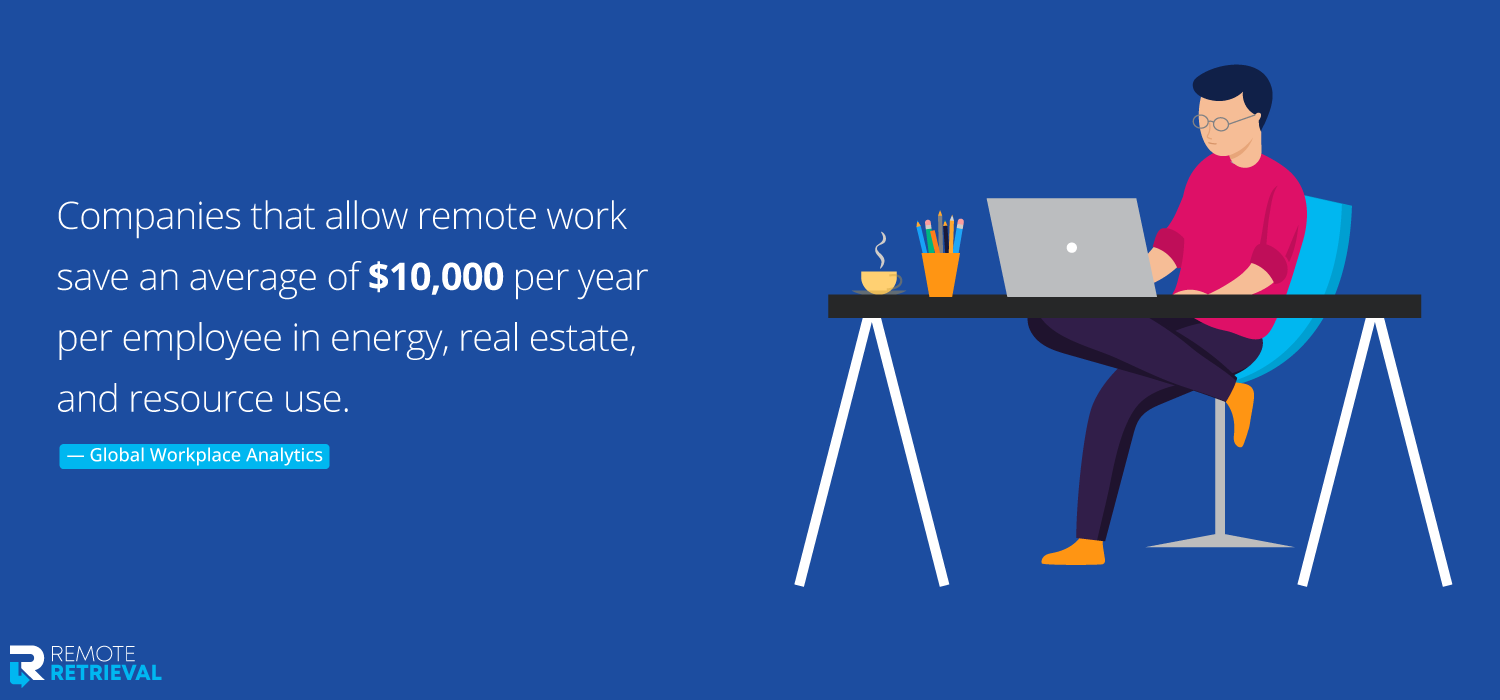
Companies can save $10,000 annually by allowing remote work for employees.
Diversity, Equity & Inclusion (DEI) in Remote Workforce Management
Remote work has opened up a larger world of talent, but it will take a more deliberate effort to make everything inclusive. By 2025, remote workforce management will include DEI tools and applications as part of regular practice, such as unbiased recruiting, accessible virtual spaces, and awareness of cultural differences.
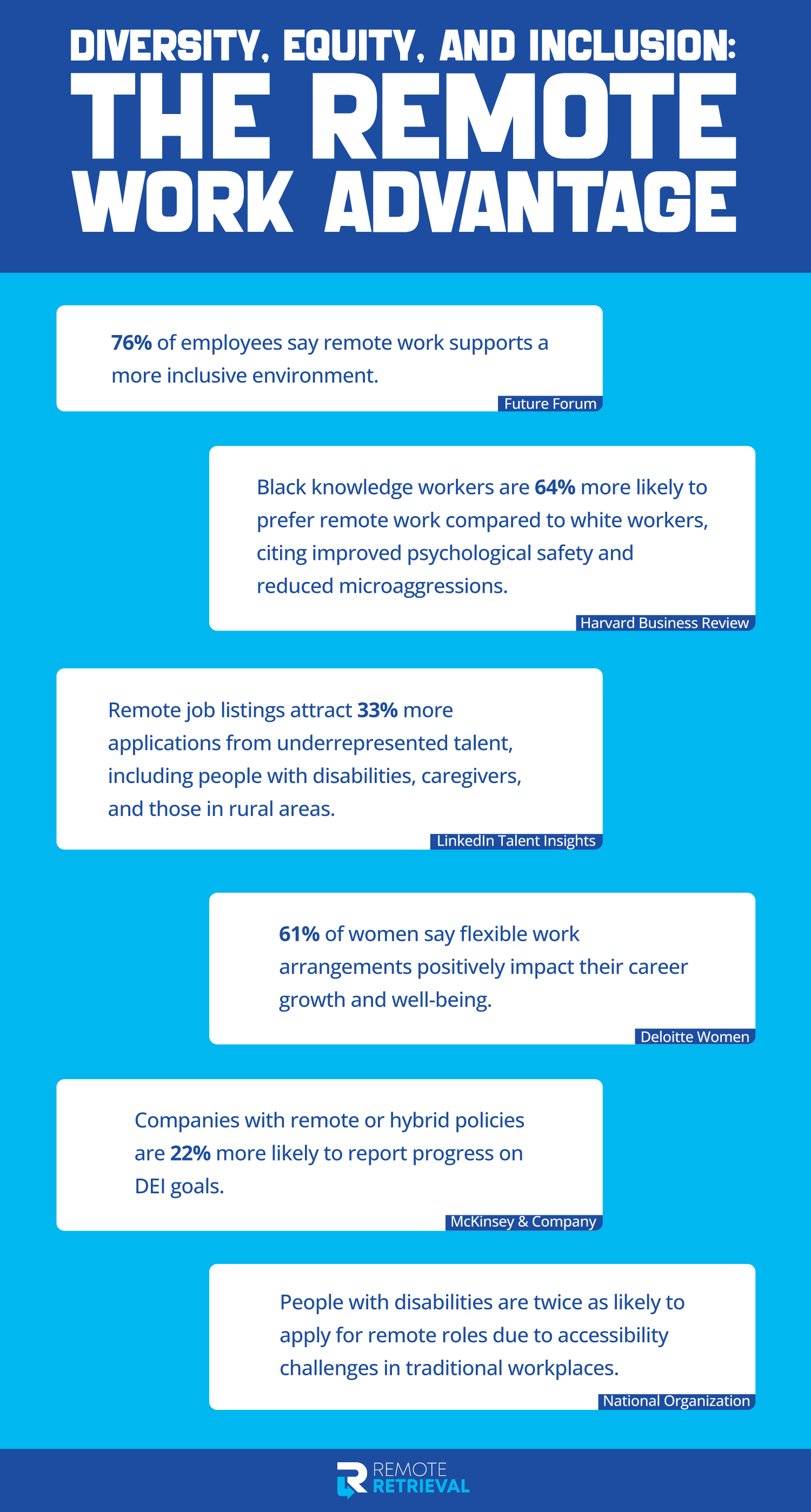
Multiple statistics highlighting the benefits of remote work
Managing a workforce working from different physical locations entails ensuring that everyone feels seen, supported, and heard within the organization. It should happen regardless of the country of origin, ethnic allegiance, or role played. Technology enables the measurement of engagement and inclusion, and would flag unaddressed areas when inclusion and DEI have been overlooked.
Building Resilience Through Business Continuity Planning
Resiliency is a critical portion of the remote-work playbook for 2025. Organizations are now directly embedding remote infrastructure into their business continuity strategies. This means having redundancies in each digital tool, decentralized access to data, and secure backup solutions for remote workforce management software.
Such threats, whether of geopolitical origin, climatic, or any other global health contingencies, present challenges to remote work technologies, making it difficult to run the business smoothly under all circumstances. Now, being remote-ready is to be crisis-ready.
How Does Remote Retrieval Help Businesses Manage IT Assets?
Sometimes, an employee has to leave for whatever reason, and it is your job to figure out how to make an efficient transition. Also, effectively navigate the IT assets return process and make it easier for both employee and the employer. For that, Remote Retrieval is here for you. We have a tailored process that helps teams manage their laptop and other gadgets outside of the workplace. This is what we offer.
- We send a specialized box perfect for laptops and computers.
- Box includes the essential packing materials, including the padding and tape for safe packaging. We also have instructions inside the box on how to pack your laptop, but in case you have trouble, follow our guide on how to pack laptops in shipping boxes.
- Attach the prepaid shipping label with your company address in the box.
We do everything in our power to ensure your laptop reaches you safely:
- Throughout the time, we stay connected with your employees via emails.
- You can easily track the status of your laptop return box in transit, at any time.
- Our dedicated support is here to assist you with any concerns or questions you might have.
In addition, we offer:
- IT Asset Managers who help you manage your IT assets’ inventory.
- Remote First Organizations to streamline your back-and-forth equipment flow.
- Human Resources for easy and fast IT assets recovery.
- Inventory Management to help you save on inventory management, shipping costs, and time spent.
Conclusion
Work is no longer in the future; it is now. As we walk into a self-determined and confident 2025, the increasingly remote workforce has become not a contingency plan but now the pillar of business strategy. Remote workforce technologies have changed the original meaning of collaboration, communication, and leadership. From AI-powered platforms to digital twins up to blockchain, it is an era in which people and businesses are thriving through remote work.
However, it is only half the story that can be told with technology. Behind every innovation is a team that forms diverse, distributed, and particularly determined decisions to make things happen, as shown in the world today. Truly addressing power means providing tools that fit people within an enabling environment of flexibility, empathy, and purpose in all possible interactions.
Now, the leader thinks outside the box regarding productivity scale and task completion. It can adapt and withstand new types of remote work strategies that are resilient, inclusive, and sustainable—a new model of remote work that enables all of this in one shot. A remotely managed team doesn’t come from control but from empowerment in 2025.
The future holds that the shape of things to come will belong to the person who combines performance with people in shaping tomorrow’s digital workplace. They are reshaping the future of work today for organizations that choose to invest in more innovative remote workforce solutions.
